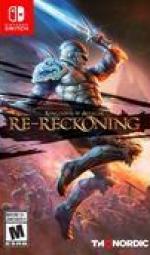 The Foundling and Other Tales of Prydain by Lloyd Alexander
The Foundling and Other Tales of Prydain by Lloyd AlexanderMy rating: 4 of 5 stars
This collection of short stories by Lloyd Alexander occurs in his land of Prydain, focusing on several events that occurred before the birth of Taran the Assistant Pig-Keeper.
“The Foundling” tells of how the three witches from the Marshes of Morva found Dallben when he was just a baby and adopted him, until he goes off on his own while receiving a book with wisdom as a gift, although it’s slightly unclear if it’s The Book of Three.
“The Stone” tells about an elderly couple, Maibon and Mondrona, with the former (the husband of the pair), receiving a stone from Doli that allows him to stop aging, although he regrets his decision since the artifact stops biological aging all around him.
“The True Enchanter” tells of how Princess Angharad’s mother Queen Regat of Llyr brought several suitors to her, intending her daughter to marry an enchanter, although against her mother’s wishes, she settles upon the least magical of them, Geraint, with whom she ultimately elopes.
“The Rascal Crow” tells about how King Arawn, Lord of the Land of Death, seeks to enslave the creatures of the forest, among them being the eponymous avian Kadwyr, who doubts the skill his and his fellow animals’ guardian Medwyn proclaims among them, although certain circumstances cause the crow to be more appreciative of his fellow beings.
“The Sword” provides backstory on the black blade that plays part in the primary Prydain series, Dyrnwyn, which becomes an inheritance of Rhitta, crowned King of Prydain, although he procrastinates in aiding a shephard named Amrys, claiming many lives along the way and erecting the subterranean Spiral Castle before he ultimately dies from his selfishness.
“The Smith, The Weaver, and The Harper” tells about how the hammer of Iscovan the Smith could work any metal, how the shuttle of Follin the Weaver could weave quickly, and how the harp of Menwy the Bard could play beautiful music, with Arawn the Lord of Death seeking these relics and disguising himself, with the first two craftsmen falling for his deception but the last seeing through his veil.
“Coll and His White Pig” tells of how Coll seeks to rescue his white pig Hen Wen from King Arawn of Annuvin, Lord of the Land of Death, due to the swine’s disposition as an oracular porcine, and meets Dallben, who allows him to partake in the wisdom of The Book of Three.
“The Truthful Harp” tells about how King Fflewddur Fflam aspires for recognition by the High Council of Bards, and while the Chief Bard initially fails him, he does give him his iconic harp whose strings break whenever he utters an aberration, with this quirk allowing him to grow in character.
Doesn’t quite fill all the holes in the Prydain series, particularly with regards to the enigmatic Taran, but definitely a good read, whether before or after the main series.
View all my reviews
















